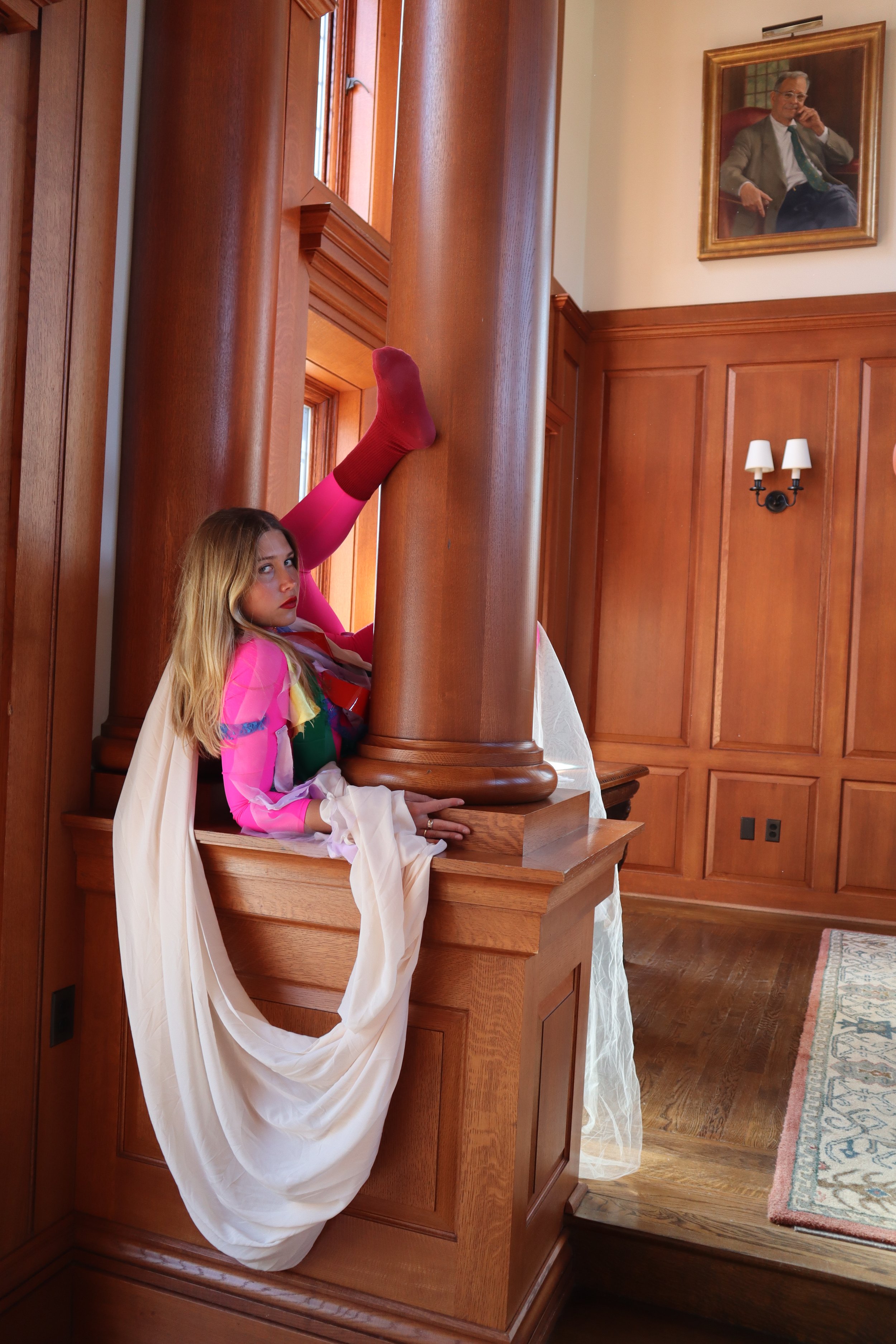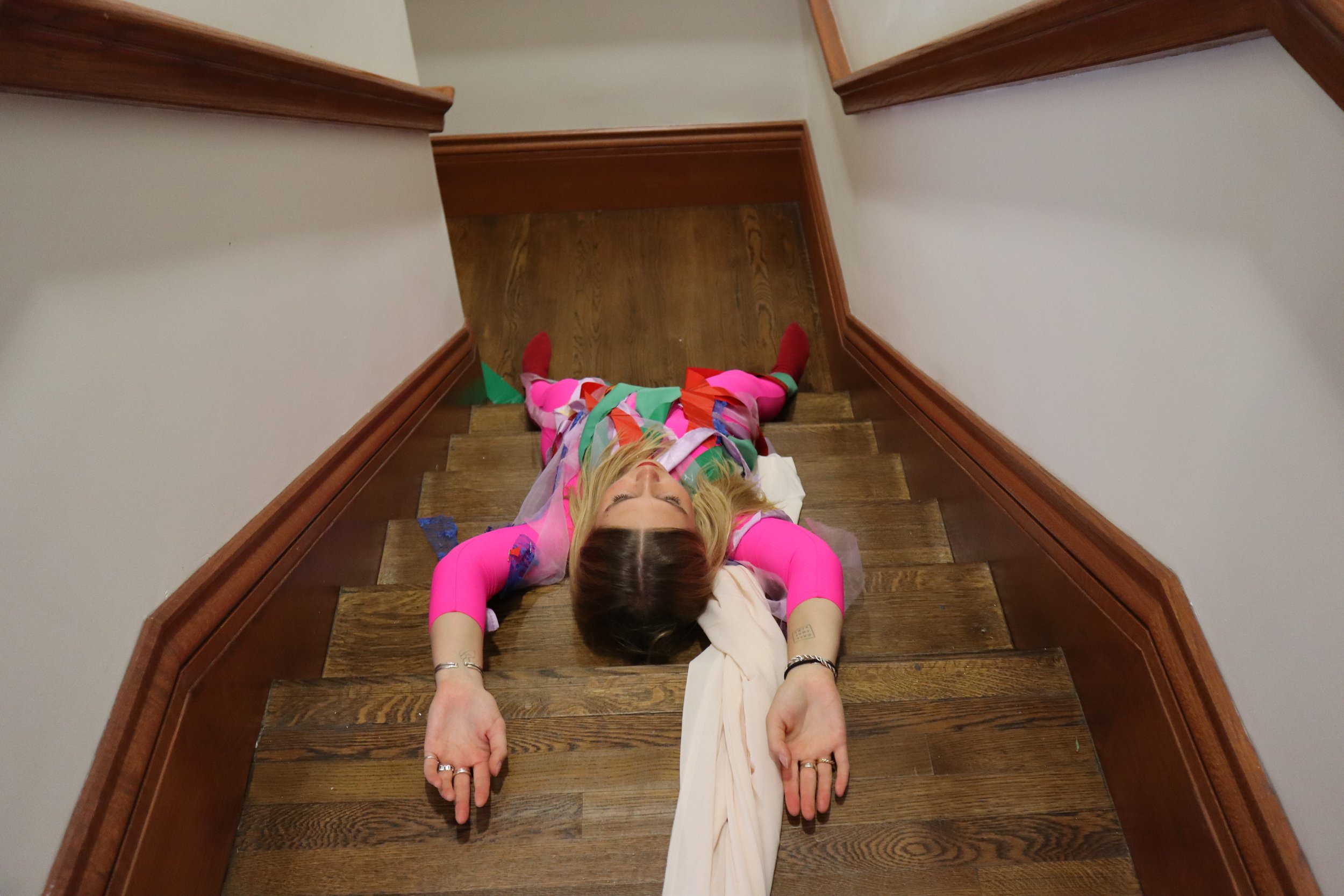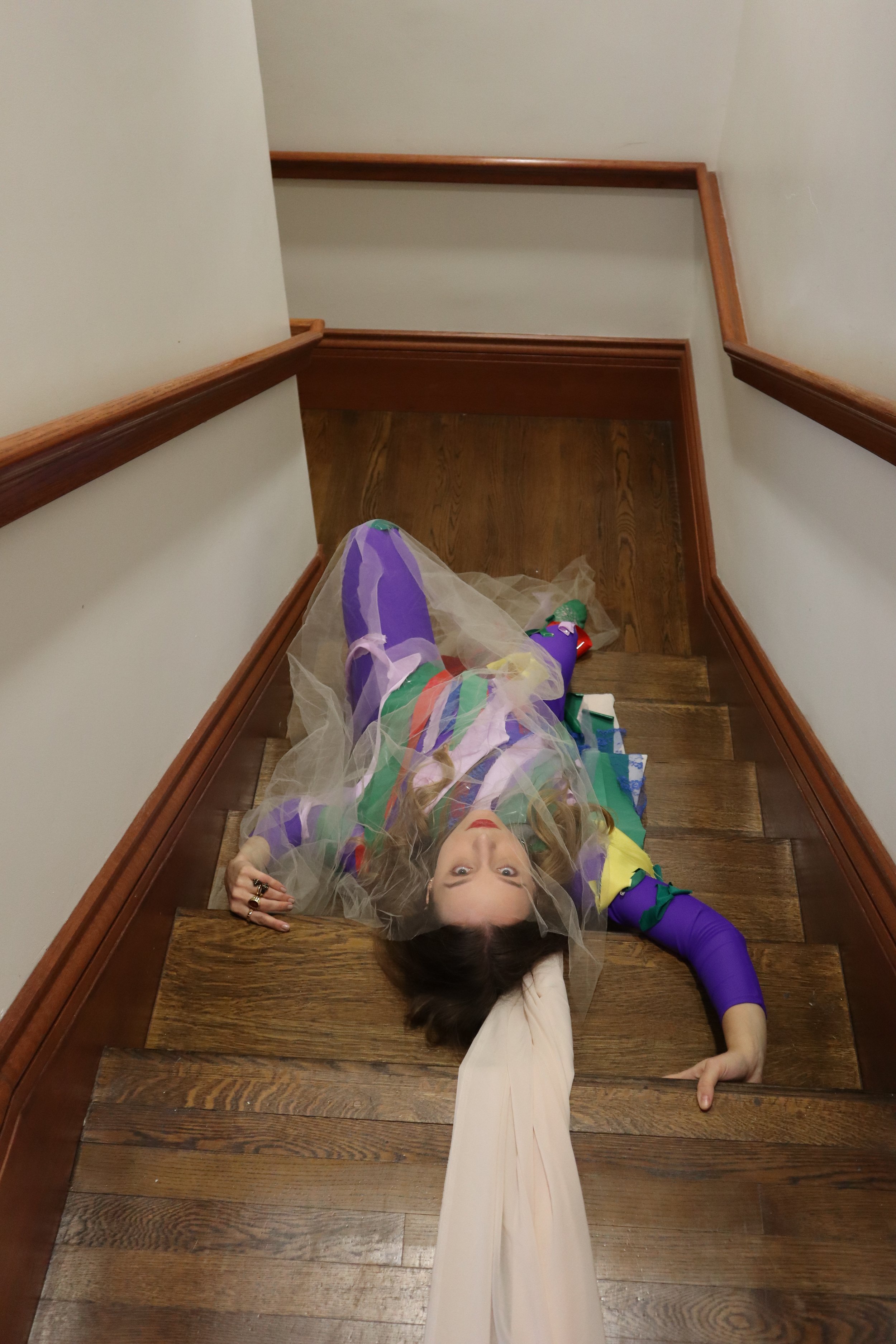EXTENSIONS (2024)

What does it mean to occupy space? What does it mean to extend one’s limbs, one’s tendrils into that space? Conversely, what does it mean to not be able to?
“EXTENSIONS” aims to explore the relationship between identity and space, specifically that of women and built structures. As women who are members of an exclusive social club (into which women were only accepted in 1991) we spend many of our days, consciously or subconsciously, navigating an enclosed and singular space: where to sit, where to walk, how to extend, how to recline, incline, curl up, are all daily decisions to be made.
The Ivy Club at Princeton University is a social organization, as well as a physically grounded concept due to its building and sense of place. The walls carry history, specifically a gendered one. Gold plaques with names of members past adorn the walls; paintings of men from previous generations are hung high out of reach; beautiful wood paneling surrounds us. Our piece aims to draw attention to the space by experimenting with our female bodily-extension into it by testing the limits of our bodies in relation to the built environment around us. How did the first women permitted in these spaces enter? How did they hold their bodies? Where could a human being feasibly enter if they were not (figuratively and literally speaking) allowed through the door? And now, over thirty years later, how are women entering/fitting into these spaces? The Ivy Club is an architectural embodiment of HISTORY MEETING MODERNITY.
The costumes we made for this piece are intentionally extraneous. They are EXCESSIVE. There is too much fabric. They are long and unwieldy. But this is only relative to how we are used to moving through space. Being in these costumes allowed us to invent new ways of situating, moving, orienting and grounding. Our costumes’ tendrils drape, curl, trace, trail, and occasionally trip. But we grew new muscles as a result. We now know how to sit in these fireplaces, hang between these pillars, extend through these windows and hang upside down.
Our decision to shoot in fireplaces, windows, doorways, and bookshelves, was inspired by their natural frame-like appearance. We felt that in placing our living bodies in these incidental and built-in frames, we could insert ourselves into a visual conversation with the more formalized frames throughout the club: the (largely male) painted portraits and class photos lining the club. Frames are significant because they indicate that what is inside their four walls IS SIGNIFICANT. Frames can be stiff (just as buildings can be stiff), but they can be made looser, just as human frames can.
Our frames in this project are fluid, gate-like, asking to be crossed over and walked in front of. Our frames are easily defied. In the process of shooting these photos, we opposed their confines through extension of the limbs and tendrils of our costumes. Our frames both held us and urged resistance. EXTEND.
We hope that this project will inspire thought and that it will urge members in this club to consider the physical space that we so passively occupy on a day-to-day basis. This project is not meant to condemn but to transform and bring to light the MALLEABILITY OF SPACE; to widen our conceptions/perceptions of space and contemplate the effect of built (and imagined) structures on the body. How do we (literally) move through the world? We encourage you to think about the way you sit, walk, talk, eat etc. Maybe take a different route to the bathroom. Or try sitting in a fireplace one day.
—Bella Butler and Ava Crnkovic-Rubsamen









